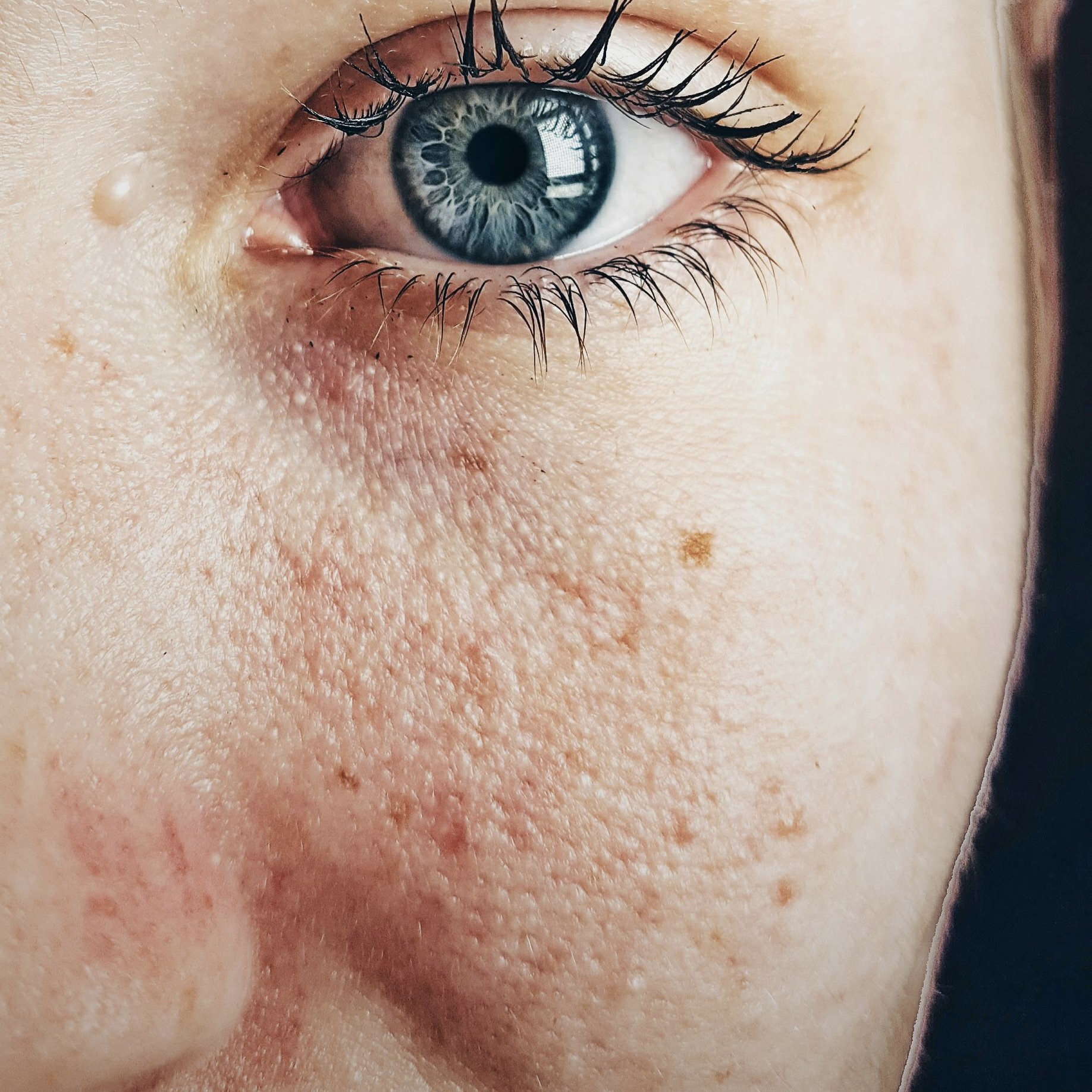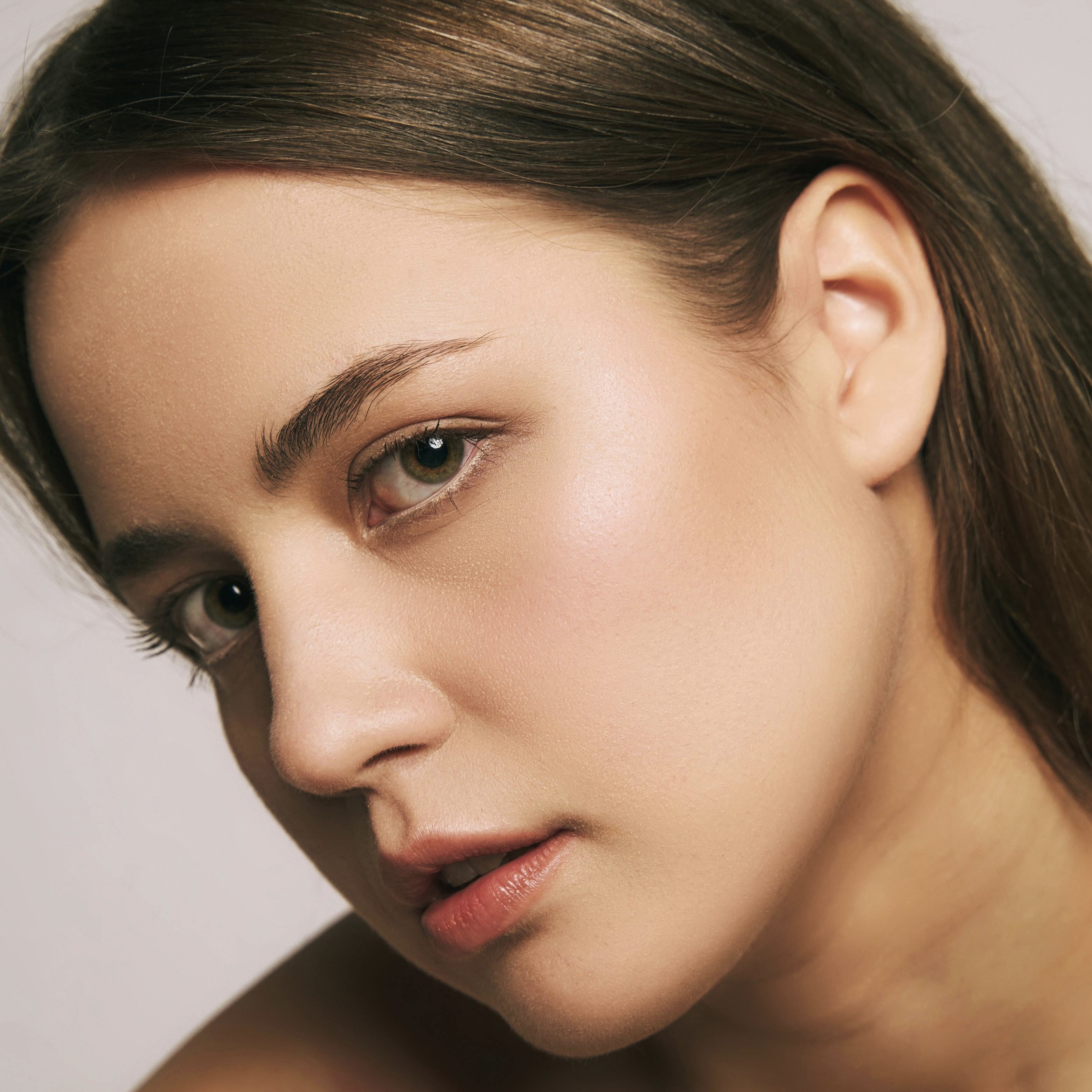Overview
What's the Difference? Age Spots, Sun Spots, Dark Spots, and Liver Spots
Age spots might be referred to by many different terms, but they all point to the same condition: spots that appear anywhere on the body due to the skin's melanin-producing reaction to too much exposure to the sun or tanning booths.
They can vary in size and color, as well as in name. Also called liver spots or sun spots, the marks that can appear as small as freckles and as large as one centimeter in diameter have nothing to do with a person's liver. The dark spots may show up as black dots or light brown circular shapes, or even grey marks.
What they all have in common is that they are the result of sun exposure over time, and it's important that the dark spots be examined by a medical professional to distinguish them from skin cancer.
Age Spots on the Face
Age spots often appear on the face since, the facial area is often exposed to the sun and not hidden behind any type of covering, just like the body. Also known as solar lentigines, age spots might be more plentiful on the side of the face that gets the most sun exposure, such as the left side of the face for drivers in the U.S., which can be subjected to 20 times more UV exposure.
The New England Journal of Medicine published a famous image of photo-damaged skin on the left side of the face of a 69-year-old man who drove a delivery truck for 28 years, exposing him to skin-aging UV rays.
Age Spots on the Hands
In the same manner that the face is more at risk for greater sun exposure, so are the backs of the hands more vulnerable to sun damage that can leave brown spots atop them. Telltale signs often reside on the hands of elderly individuals, which often include liver spots and thin skin. Most common in adults older than 50 years of age, age spots can also show up on younger folks who spend lots of time in the sun.
Reasons and Causes
Sunspots are created when the body reacts to too much sun exposure and produces melanin as a result. The high amount of melanin produced can appear as singular or concentrated clumps of pigment, according to the Mayo Clinic.
It is important to be aware that not just exposure to the natural sun can cause these problems. Using tanning beds can create spots on the skin as well. Whereas non-cancerous spots on the outer layer of the skin are merely aesthetic and not harmful, many people choose to have the marks marring their skin removed for cosmetic reasons.
Should You See a Medical Professional About Skin Concerns?
Even if discoloration within your facial skin or that of your hands doesn't trouble you, it is smart to bring the issue to your health care provider to rule out malignant conditions, and to learn how to prevent age spots in the future. They can happen to individuals with all kinds of skin types and can be more visible in folks with contrasting light-colored skin.
People who are bothered by the way these overly pigmented areas hamper an otherwise smooth complexion have several choices for fading the black, brown, or tan spots.
Treatment Options for Age Spots: Lasers, Creams, and Home Remedies
Laser Resurfacing
According to the American Academy of Dermatology, laser treatments can help fade spots in only one or two sessions, representing a long-term and more effective way of treating them when compared to using skin-lightening creams. However, laser resurfacing may not be ideal for all skin types, and can be accompanied by side effects that cause the spots to temporarily becoming darker or crust over.
Light Therapy
Various forms of blue, red, green, and yellow light therapy can be used at home or in a medical office to combat skin problems like acne and dark spots. Intense pulsed light therapy or IPL treatments fade spots by destroying the cells responsible for creating the melanin without harming the skin.
Chemical Peels
Dermatologists apply chemical peels made of various substances that help to slough off layers of excess or dead skin and help fade brown spots in the skin. The newly peeled skin should be protected from the sun to help lessen the chance of the spots returning.
Microdermabrasion and Dermabrasion
The microdermabrasion treatment is a less-invasive way of abrading the skin with diamond elements encrusted upon a handheld wand with vacuum power, or by blowing and suctioning crystals across the skin. The result is exfoliated skin with a reduced appearance of brown spots. Dermabrasion, on the other hand, is a more invasive manner of sloughing off deeper skin layers, to get rid of uneven pigmentation and liver spots. Dermabrasion may only be safe for fairer skin types.
Liquid Nitrogen Cryosurgery
Cryosurgery, according to the American Society for Dermatologic Surgery, freezes away spots by using liquid nitrogen to get rid of excess pigmentation. With the liquid nitrogen applied to the spots via cotton-tipped swabs, single or multiple spots are frozen off, making the skin appear lighter as a result.
Products to Help Fade Skin Pigmentation Marks
Creams
There are a plethora of over-the-counter and prescription creams that help fade age spots. According to Cleveland Clinic Hospital, prescription fade creams with 4% hydroquinone can help provide more intense fading than over-the-counter creams with lesser concentrations. Drugstore creams with ingredients such as kojic acid and glycolic acid may also be beneficial products in a skin care routine focused on fading sunspots.
Home Remedies
Additionally, at-home remedies that focus on skin exfoliation with alpha hydroxy acids or lactic acid may help in reducing spots on the skin. Vitamin C also works as a way to brighten the skin when serums containing the potent ingredient are used morning and night, in conjunction with sun protection creams possessing an SPF 30 level or higher.
Niacinamide serums may represent another helpful way to deal with hyperpigmentation. It may take up to six to eight weeks to see results by using such creams. Natural treatments such as applying licorice extract supplements to the face are also recommended by Dr. Youn to lighten spots in approximately eight weeks after usage begins.
Preventing Future Spots
After working so hard to rid your face and hands of liver spots, it helps to follow these tips to prevent them from coming back:
Limit sun exposure by avoiding peak hours of intense sun rays from 10 a.m. to 2 p.m.
Slather on broad-spectrum sunscreen often, including ones with UVA and UVB light protection
Purchase products with SPF (sun protection factor) 30 and above
Gain additional sun protection by adding protective clothing to your wardrobe and wearing big hats, baseball caps, or clothes containing an ultraviolet protection factor (UPF) on the label, with levels of 40 to 50
When Spots Become a Cause for Concern
As long as your spots continue to appear the same size, color, and shape, you may have nothing to worry about. However, if you notice any marks on your skin growing in size, that contain darker colors, or seem to look different than their usual appearance in any form, have a physician verify that your age spots aren't melanoma, which is a serious kind of skin cancer.
New skin changes should be examined by a medical professional, especially if they are related to spots that have a strange combination of hues, are quickly growing in size, or become painful, itchy, red, bleed, darken in color, or contain oddly-shaped borders.
Actinic keratosis represents a health problem wherein precancerous skin lesions appear on the skin in a rough, crusty, and scaly manner that takes on the appearance of warts. It's a condition that also happens as a result of UV exposure from the sun or tanning beds. Similar to age spots, AKs (actinic keratosis) can show up on sun-exposed areas like the hands, arms, face, exposed scalps, necks, ears, and, shoulders.


